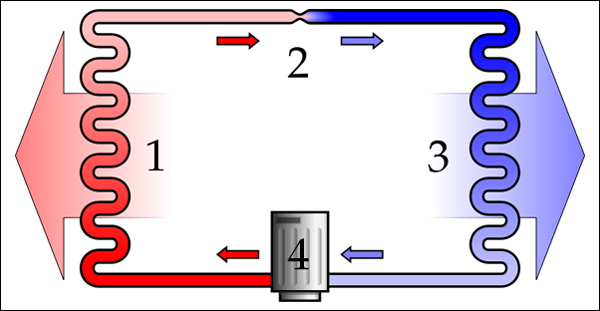Thermal pumps
Thermal pump is machine which pumps heat from one location to other when outside work is applied. As a rule it is carried out from the cooler place to hotter one.
Thermal pump is the base for the line of machines and facilities:
- refrigerator and freezer
- air conditioning
- some types of heating facilities

Principle of the thermal pump has been known for more than 100 years. The designer of the first thermal pump in the world was Slovak – Aurel Stodola. His thermal pump constructed in the year 1928 still works in Switzerland and provides the heat for the town hall by taking the heat from the water in lake (closed loop). The first extensive technical exploitation of this type of heating was realised in the year 1936. However the actually extensive use of the heat pumps for heating was prompted by the energy prices rise at the beginning of the seventies.
The heating thermal pump is facility exploiting the non-conventional energy sources for the central heating (ÚK) and hot utility water (TÚV). It operates on the principles of the exploitation of otherwise not usable energy – low potential heat from the environment (i.e. from water, air, soil or waste heat), when after its pumping there is a change in the temperature level, to such one which may be exploited in the heating system. The essential prospective for the heat pumps lays in the fact that no heat is added directly to the global thermal regime of our planet as it is the case of any type of fossil fuel combustion. The case of the indirect heat addition represents the certain amount of heat generated in the power stations in electricity generation which is needed to assume the heat pump operation.



